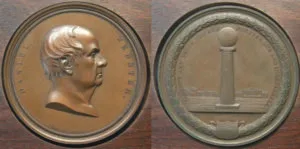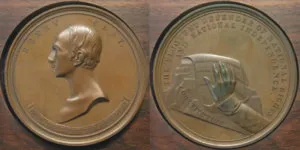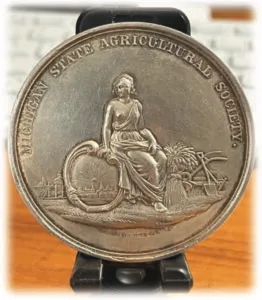Let Me Introduce You to Charles Cushing Wright! Part II
By: Ron Gammill
Charles Cushing Wright (1796-1854) was born in Damariscotta, Maine, where he taught himself engraving as an apprentice to John Osburn, a jeweler and watchmaker in Utica, New York. After working for several years as an itinerant engraver, Wright settled in New York City, where he established a die engraving firm in partnership with James Bale. In 1820 he went into the bank note engraving business with the
artist Asher B. Durand; and later he became one of the founding members of the National Academy of Design and lectured there on the art of the medal.

Although executed in the prevailing neo-classical style of the period, Wright’s strongly individualized portraits of the prominent civic leaders and artists of America’s early years rise above the bland idealism often associated with that style. His skill as a die engraver is apparent in the detail of his portraits of Daniel Webster and Henry Clay, which follow Roman models in the
exaggerated realism of their boldly indicated wrinkles and veins. Working within the established format of official, neo-Classical medals, Wright adds visual interest to the Clay and Webster medals through his careful attention to inscriptions and decorative borders. While he often engraved his medals from reliefs modeled by other artists, the noble portrait of Webster is his own design, as are the innovative pictorial reverses of the Webster and Clay medals. The reverse of the Webster medal, which features an imaginary monument to the statesman with the U.S. Capitol as it appeared at the time in the distance, is particularly noteworthy for its balanced composition and fine detail.


Perhaps of more interest to the current reader is the medal illustrated below, the Michigan State Agricultural Society Medal.

BIBLIOGRAPHY: “Charles Cushing Wright, Distinguished Medalist,” pp.
67-68 in Chamberlain; Forrer, vol. 6, pp. 556-57; “Medallions of America’s
Old Masters,” pp. 11-14 in Chamberlain.